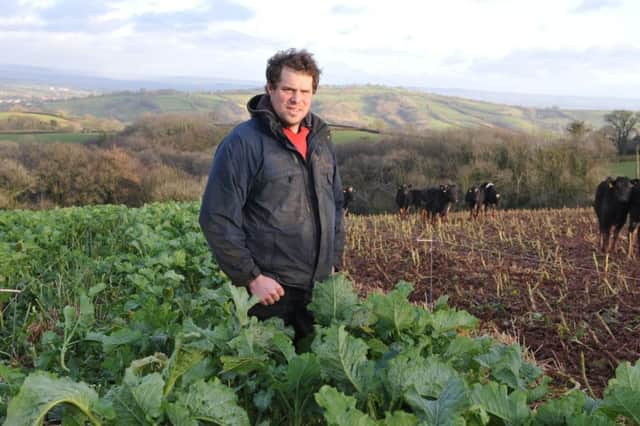Tracesure® eliminates trace element uncertainty


Nigel and Brenda Tucker, who farm with their son Richard, needed to correct the trace element imbalance in their herd’s diet.
The farmland is deficient in iodine and this can be a problem if livestock don’t get iodine from other sources.
Advertisement
Advertisement
“We had been getting issues with the cows post-calving and it was affecting yields. We worked closely with the vets and blood tests pointed to a lack of iodine. We looked at products we could use to resolve the situation,” says Richard.
They found the solution in Tracesure® Cu/I Cattle, a slow release bolus that utilities unique leaching bolus technology to eliminate trace element uncertainty. “They have done the job they were employed to do. We don’t feed a lot of concentrates but the bolus meets the herd’s requirements,” Richard reports.
The Tucker family converted to a spring calving, pasture-based system in 2000 to increase cow numbers without incurring capital costs associated with high input herds.
They now milk 240 Friesian Jersey cross cows and produce an annual milk yield average of 5,000 litres at 385kg of milk solids from grass, grass silage and 400kg of concentrates a year.
Advertisement
Advertisement
Richard saves time by bolusing the herd with Tracesure® Cu/I Cattle when he administers fluke and worm treatments at drying off and during vaccination in the spring. Richard also boluses them with Tracesure® I Cattle three weeks before they serve because, the trace element status and associated benefits of Tracesure® are passed from mother to offspring.
Grazing is at the heart of the system, with cows turned out to pasture after calving to graze opening covers of 2,700kg DM/ha.
The youngstock are bolused at 70kg with Tracesure® Cu/I Calf to supply trace elements needed for growth and production.
Bulling heifers winter graze on kale with silage bales before serving at 15 months. Soils are free draining and the region has a relatively low rainfall, so the system is well suited to the farm.
Advertisement
Advertisement
“This year is probably the best batch of heifers we have had, they look so uniform,” says Richard.
To find your nearest stockist or to bolus your herd contact Neill Acheson, +44 (0)7795 434 986, [email protected]